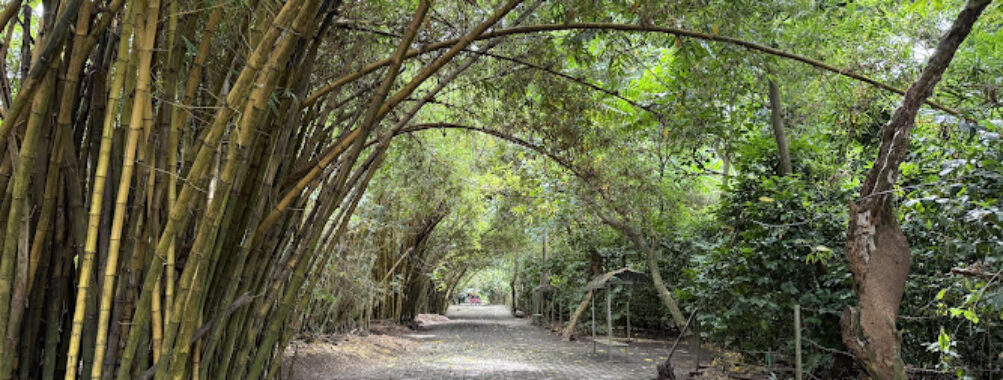
Baras Bird Sanctuary
Table of Contents
Description
If you’re the type who finds peace in the flutter of wings and the quiet chatter of nature, Baras Bird Sanctuary in Tacurong City might just be your new happy place. This spot isn’t your typical tourist trap; it’s a genuine wildlife refuge where herons, egrets, and other migratory birds find respite. What’s cool is that this sanctuary used to be a black peppercorn farm—yeah, from spice to birds! It’s kind of poetic if you think about it: a place once cultivated for crops now nurtures life in a totally different way.
Walking through Baras, you’ll notice the sheer number of nests, feathers scattered like confetti, and even hatchlings peeking out from their eggs. It’s a living, breathing snapshot of avian life that’s surprisingly accessible. The sanctuary is great for families, too—kid-friendly hikes and public restrooms make it easier to spend a good chunk of the day here without feeling like you’re roughing it. And let me tell you, there’s something oddly satisfying about hearing the calls of the Black Crown Night Heron or spotting a Great Egret standing tall in the water, almost like they’re posing just for you.
Don’t expect a manicured park with paved paths and souvenir shops. Baras keeps it real, with trails that invite you to slow down, breathe, and maybe even lose track of time. It’s a bit of an escape from the city buzz of Tacurong, offering a chance to reconnect with nature in a way that feels authentic and unforced. Whether you’re a bird enthusiast, a casual stroller, or someone who just loves a good hike, Baras Bird Sanctuary has a quiet charm that creeps up on you and sticks around.
Key Features
- Home to seven species of birds including Black Crown Night Heron, Great Egret, and Intermediate Egret
- Kid-friendly hiking trails that are manageable even for little legs
- Public restrooms available, making longer visits more comfortable
- Rich birdlife with tens of thousands of nests and natural habitats preserved
- Easy accessibility from Tacurong City, just a short tricycle ride away
- Ideal for birdwatching and photography enthusiasts looking for unique shots
- A peaceful nature escape from the commercialized city environment
- Educational opportunity for kids and adults alike to learn about migratory birds
Best Time to Visit
If you want to catch the sanctuary at its liveliest, plan your trip between October and March. That’s when the migratory birds flock here in full force, turning the sanctuary into a bustling avian metropolis. The air buzzes with activity, and the chances of spotting rare species shoot way up. I remember visiting once just before the migratory season ended, and even then, the place was humming with life—definitely a reminder to book your visit early if you want the full experience.
Outside this window, the sanctuary is quieter, which might appeal to those who prefer a more solitary nature walk. But be warned, some birds might be off on their seasonal adventures elsewhere, so the spectacle won’t be quite the same. Weather-wise, the dry season is your friend here—it makes hiking easier and the trails less muddy, so you’re not slipping around or worrying about sudden downpours ruining your outing.
How to Get There
Getting to Baras Bird Sanctuary is surprisingly straightforward, even if you’re not a local. From the heart of Tacurong City, it’s about a 12-kilometer journey, usually covered by a hired tricycle. This short ride winds through a mix of urban and rural landscapes, giving you a little teaser of what’s to come—a shift from city hustle to serene nature.
If you’re coming from farther away, Tacurong is well-connected by road, so you can reach it via bus or private car from nearby cities. Once you’re in town, just ask around for tricycles heading to Baras Bird Sanctuary—they’re pretty familiar with the route. The accessibility is one of those nice surprises; you don’t have to be some hardcore adventurer to get there, which is a relief if you’re traveling with kids or older folks.
Tips for Visiting
Alright, here’s where I share some nuggets of wisdom from my own jaunts and what I’ve picked up from other visitors. First off, bring your binoculars if you have ’em. Some of the birds hang out in spots that are a bit tucked away, and a good pair of binoculars can turn a “meh” sighting into a jaw-dropping moment.
Wear comfortable shoes—those kid-friendly trails can still get a little muddy or uneven, especially if it’s rained recently. And don’t forget sunscreen and insect repellent; nature’s beauty often comes with a side of sun and bugs. I’ve learned the hard way that a sunburn or a swarm of mosquitoes can really put a damper on your day.
Try to visit early in the morning when the birds are most active and the light is perfect for photos. Plus, the air feels fresher, and the sanctuary is less crowded. Speaking of crowds, weekends can get a bit busier, so if you’re after some quiet time, aim for a weekday visit.
Lastly, be respectful. This is a sanctuary, after all, not a playground. Keep noise to a minimum, stick to the trails, and don’t disturb the nests or birds. It’s their home, and we’re just lucky to get a peek. If you’re bringing kids, it’s a great chance to teach them about wildlife conservation and the importance of protecting natural habitats.
Visiting Baras Bird Sanctuary isn’t just a day out—it’s a little adventure, a moment to pause, and a chance to witness a slice of nature that’s quietly thriving right next to urban life. So pack your curiosity, your camera, and maybe a sense of wonder—you won’t regret it.
Location
Places to Stay Near Baras Bird Sanctuary
Find and Book a Tour
Explore More Travel Guides
No reviews found! Be the first to review!